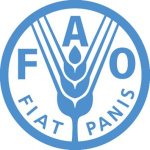- Industry: Agriculture
- Number of terms: 87409
- Number of blossaries: 0
- Company Profile:
Established in October 1945 with the objective of eliminating hunger and improving nutrition and standards of living by increasing agricultural productivity, FAO coordinates the efforts of governments and technical agencies in programs for developing agriculture, forestry, fisheries, and land and ...
Group of water-soluble proteins rich in basic amino acids, closely associated with DNA in plant and animal chromatin. Histones are involved in the coiling of DNA in chromosomes and in the regulation of gene activity.
Industry:Biotechnology
Growing of water plants and animals, rather than harvesting them from wherever they happen to grow in rivers or seas. Usually aquaculture uses fresh water; when it uses sea water it can be called mariculture. It is considered to be a part of biotechnology (although peripheral) because it is a new commercial development, and because it often involves growing organisms in large volumes of water, which has similarities to growing large volumes of yeast or bacteria. Biotechnology also provides clean, well-aerated water for the animals to grow in; food, such as krill or powdered synthetic food; and food additives, such as astaxanthins to ensure that fish and prawns have the right colour. Aquaculture has also been used to mass-produce macro- and micro-algae for chemicals, vitamins and pigments. For both animals and plants, biotechnologists have been using genetic methods to produce triploid and tetraploid organisms, and hybrid algae through plant cell fusions. Triploid trout, for example, are sterile, and can be used for biocontrol of weeds without the threat of their being able to breed themselves.
<i>
Industry:Biotechnology
Growth determined and limited in time, as in most floral meristems and leaves. The differentiation process is irreversibly established. Determinate growth contrasts with the usual culture growth, which is infinite and indeterminate.
Industry:Biotechnology
Halving of the chromosomal number of somatic cells; a possible method of producing "haploids" from somatic cells and calluses by artificial means.
Industry:Biotechnology
Hard, sharp structure on the surface of a plant; usually a modified leaf.
Industry:Biotechnology
Having a gene product that, when present, enables a researcher to identify and preferentially propagate a particular organism or cell type.
Industry:Biotechnology
Having an effect on one of the organs of sense, such as taste or smell.
Industry:Biotechnology
Having the potentiality of forming all the types of cells in the body. The property of somatic cells to be induced to undergo regeneration. The diploid zygote formed at fertilization is a single cell which is capable of division and differentiation to give rise to the total range of cell types found in the adult organism.
Industry:Biotechnology
